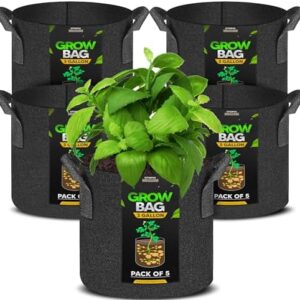Have you ever tried your hand at plant propagation, only to be left disappointed with the results? Don’t worry, you’re not alone. Plant propagation can be a tricky process, but with the right knowledge and techniques, you can increase your success rate significantly. To help you out, we’ve compiled a list of expert tips for successful plant propagation every time.
1. Choose the right plant for propagation
The first step in successful plant propagation is choosing the right plant to propagate. Not all plants can be easily propagated, so it’s important to do your research before you start. Look for plants that are known to be easy to propagate, such as succulents, herbs, or houseplants. These plants are more likely to root quickly and thrive after propagation.
2. Use the right tools and materials
Once you’ve chosen the plant you want to propagate, make sure you have the right tools and materials on hand. You’ll need sharp scissors or pruning shears for taking cuttings, a clean pot or container for rooting, and a well-draining potting mix. It’s also a good idea to have rooting hormone on hand, which can help speed up the rooting process.
3. Take healthy cuttings
When taking cuttings from a plant for propagation, it’s important to choose healthy, disease-free stems. Make sure your scissors or shears are clean and sharp, and cut the stem at a 45-degree angle to increase the surface area for rooting. Remove any leaves from the lower half of the cutting to prevent rotting, and dip the cut end in rooting hormone before planting.
4. Provide the right environment
Once you’ve taken your cuttings and planted them in the rooting medium, it’s important to provide the right environment for them to root successfully. Place your cuttings in a warm, bright location, but avoid direct sunlight, as this can cause them to dry out. Keep the soil moist but not waterlogged, and mist the cuttings regularly to increase humidity.
5. Patience is key
One of the most important things to remember when propagating plants is that patience is key. It can take weeks or even months for your cuttings to root and start growing, so don’t be discouraged if you don’t see immediate results. Keep an eye on your cuttings and continue to provide them with the right care and you’ll eventually see success.
6. Experiment with different methods
There are several different methods of plant propagation, so don’t be afraid to experiment and see what works best for you. In addition to stem cuttings, you can also try leaf cuttings, division, or layering. Each method has its own advantages and disadvantages, so give them a try and see which one yields the best results for you.
7. Monitor and adjust as needed
Throughout the propagation process, it’s important to monitor your cuttings regularly and make adjustments as needed. If you notice any signs of rot or disease, remove the affected cuttings immediately. If your cuttings are not rooting as quickly as you’d like, try adjusting the humidity levels or changing the rooting medium.
8. Pot up your new plants
Once your cuttings have rooted and started growing, it’s time to pot them up into individual containers. Choose a pot that is slightly larger than the root ball of the plant, and fill it with a well-draining potting mix. Water your new plants thoroughly and place them in a warm, sunny location to encourage further growth.
9. Harden off your new plants
Before moving your new plants outdoors or into a sunnier location, it’s important to harden them off first. This means gradually acclimating them to their new environment by increasing their exposure to sunlight and outdoor conditions over a period of several days or weeks. This will help prevent shock and ensure that your new plants thrive in their new home.
10. Share your success
Once you’ve successfully propagated your plants, don’t be afraid to share your success with others. Propagation can be a fun and rewarding hobby, and sharing your knowledge and plants with friends and family can be a great way to spread the joy of gardening. Who knows, you might even inspire someone else to try their hand at propagation and continue the cycle of growth and sharing.
In conclusion, plant propagation can be a rewarding and fulfilling process, but it does require some patience and know-how. By following these expert tips and techniques, you can increase your chances of successful plant propagation every time. So get out there, grab your scissors and rooting hormone, and start propagating! Who knows, you might just discover a new passion for gardening along the way.






